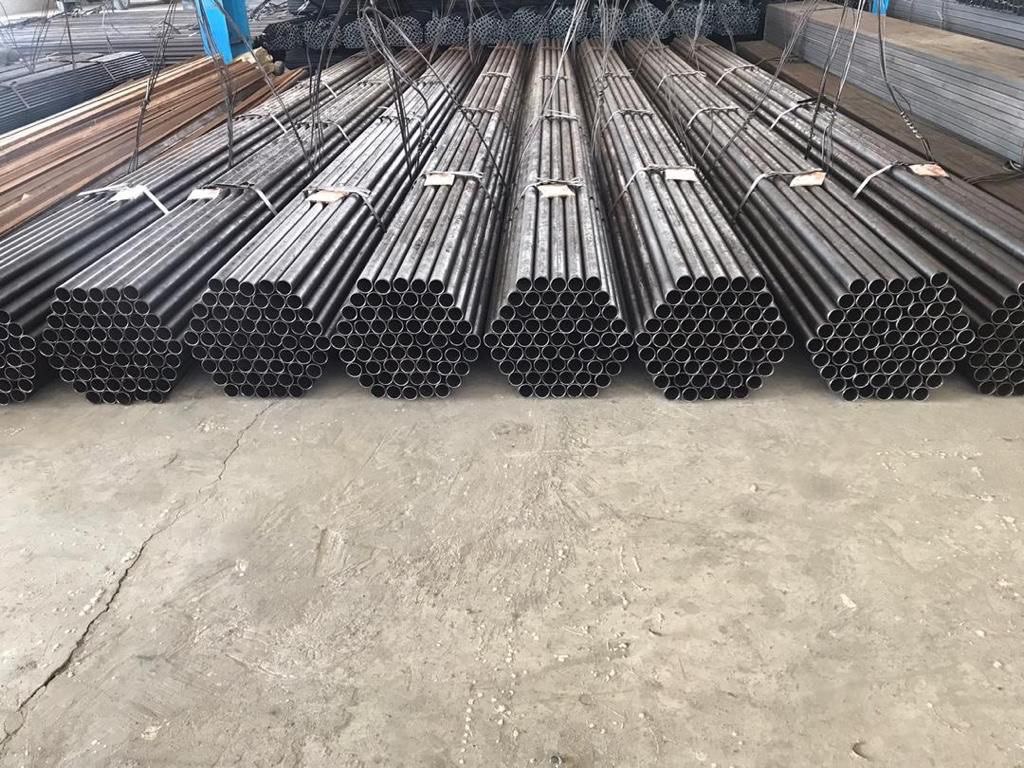The profile can is one of the most widely used steel sections in various industries, which is used to make doors and windows, metal benches, sidewalk and staircase railings, wall fencing, building columns and metal frames, etc.
Literally, it can be said that profile means fixed and long sections, which are used as light and heavy profiles in construction and machine building. In this article, we intend to introduce you, dear companions, to the uses of the profile and its production method.
Profile history
Application of the profile
Profile production methods
Types of profiles
Calculate the amount of profile can load
Factories producing profiles
Profile history
The history of industries has always shown that hollow sections can be used in various industries for many years due to their unique characteristics. In 1890, a bridge was built in Scotland with a length of about 521 meters. Due to the fact that at that time there was no production method available for making HSS sections, this bridge was built using rolled sheets that were riveted together.
After that, in the same century, the first factory for the production of circular hollow sections was established by the Mansman brothers, who drilled the sheet rolls in an oblique manner and made it possible to make sections. This process was gradually improved by Peiger and a few years later, hollow sections with less thickness and without welds were made.
After the Second World War and after the progress made in seamless welding of sections, the welding industry grew dramatically. The produced sheets of these sections were easily and seamlessly welded together until finally a hollow section was made. Finally, the required cutting of circular and rectangular hollow sections was considerably developed by the device invented by Muller.
Application of the profile
Today, profiles are used in various industries. In general, it can be said that the most common use of this product is in making iron doors and windows.
Profiles come in many forms. Small sections of this product are used for metal fences, and larger sections, which are known as columns, are used in the construction of columns and metal frames. In general, it can be said that profiles are used for doors and windows, factory walls, staircases, sidewalks, and streets.
karbord-profil
Corner profiles can also be used for large iron doors. In addition, the shutters of the shops are also made using stud profiles. By connecting several hot and cold profiles, a composite profile is created. The shape and dimensions of construction profiles are also open and closed.
Beams, belts, rebars, studs, corners and quadrilaterals are open profiles due to their appearance, and construction door and window profiles, pipes and cans, electric shutter door profiles, and UPVC profiles due to their closed shape. Appearance is known as closed profile.
Profile production methods
The profile is produced in different ways, and each of these methods has its own advantages and disadvantages. Here we will mention two direct and indirect methods for profile generation.
Profile production methods
Profile production methods
Direct production method
In the direct method, the desired sheets are cut to specific sizes by passing through the guillotine. And after welding, the two edges of the sheet are completely shaped by frequency welding in the sizing part.
The profile produced in this way is not completely straight due to the application of force from the molds and welding heat, and it is corrected by the twister by applying force again, bending, twisting and buckling. The profile being produced is cut by an automatic saw at 66 meter intervals and packed in a certain number and after installing the specification card and confirming the quality control, it is transferred to the product warehouse.
Positive and negative characteristics of the direct method
The profile produced in this way is of good quality. In addition, it has sharp angles, precise dimensions, and a fixed welding line on the upper wall, and it has little surface curvature.
The profile produced in this way requires more precision in terms of machining and heat treatment. In addition, more air space between the inductor and the profile and ferrite slows down production. Finally, it can be said that this method will have a lower speed and lower efficiency than the indirect method.
Indirect production method
In this method of producing the profile, it is first turned into a tube in the main rolling machine according to the above steps and one of the three bending methods. After welding the two edges, in the sizing and twisting section, due to the upper, lower and side pressures, this pipe changes into different shapes and becomes more complete in the sizing and twisting section of the pipe. Finally, the final product is produced and packaged after cutting.
Positive and negative features of the indirect method
In this method, by making a pipe in the forming part and changing at least a few molds in the sizing part or taking it to other non-welding devices, several types of profiles can be prepared. In addition, it is possible to have diversity with a minimum of pipe forming machines. In addition, the air gap between the inductor and the pipe can reach the highest possible size with the minimum size and selected diameter. In this method, the maximum power of the welding machine can be used, and the production speed will be higher than the direct method.
In heat treatment, the probability of breaking is much lower due to the absence of sharp corners, but in terms of quality, rounded corners, side size, welding line and surface curvature will be less accurate than the direct method.
If the production of the pipe is only for the preparation of gas or water pipe, the diameter of the pipe in the welding part is about half a millimeter more than the final diameter, and this extra diameter increases the pipe.



